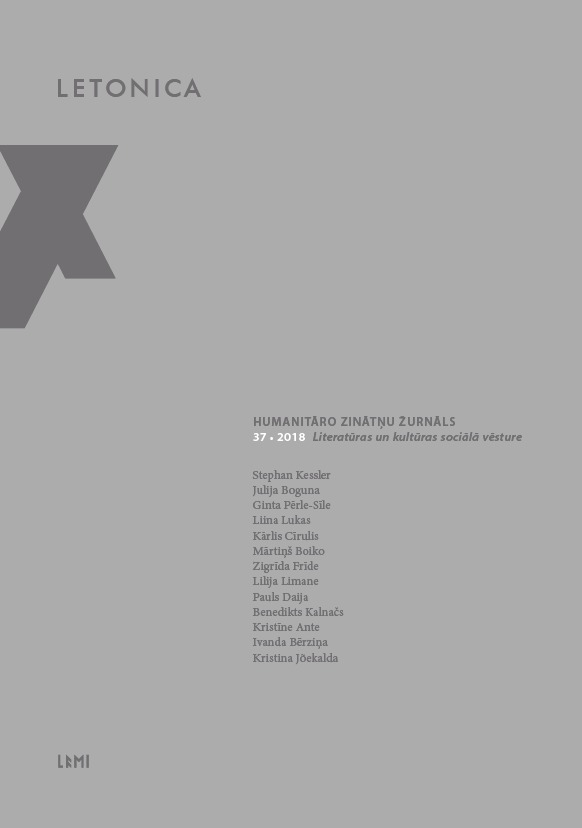Heritage, Patrimony or Legacy? Baltic German and Estonian Cultural Dialectic in Facing the Local Past
Heritage, Patrimony or Legacy? Baltic German and Estonian Cultural Dialectic in Facing the Local Past
Author(s): Kristina JõekaldaSubject(s): Architecture, Social history, Sociology of Culture, Sociology of the arts, business, education, 19th Century, Pre-WW I & WW I (1900 -1919), Interwar Period (1920 - 1939), Sociology of Art, History of Art
Published by: Latvijas Universitātes Literatūras, folkloras un mākslas institūts
Keywords: Nationalism; art historiography; public education; architectural heritage; monuments
Summary/Abstract: This article is concerned with the popular opinions of the Estonian community about the Baltic German cultural heritage, particularly architectural monuments. The topic is approached by examining widely read newspaper and journal articles from the turn of the 19th–20th centuries until the interwar era. In the dominant discourse of 700 years of suffering, not many Estonians were devoted to researching the foreign culture of the Baltic Germans in the 19th century – instead, it was seen as an obstacle in building one’s “own” culture. The different cultural backgrounds were evident, but the Estonians nonetheless set the relationship with the (Baltic) German culture as their point of departure. By the second half of the century the Baltic German national sentiment was increasingly contested by the local ethnic communities’ rising nationalism. The ten years after 1905 (when the local peasants burned down many Baltic German manor houses), witnessed intensive identity and heritage construction both among the Baltic German and Estonian communities, albeit from different perspectives. For Estonians this meant concentrating on ethnographic items and archaeological sites rather than the Baltic German “high” art and architecture. Considering that the “national project” became the number one goal during the 1920s, it does seem astonishing that there were plenty of enthusiastic supporters of the previous colonisers’ heritage. The reasons behind this reached beyond the “national” question. With the independence this material culture became the property and thus duty of the state. There were also economic reasons – the new state needed festive buildings, even if those at hand represented the former rulers. These were materialistic attitudes, looking at the monuments simply as an inherited legacy, whereas “heritage” as a more abstract construction connotes something of value, and “patrimony” as something that has been attributed national importance. The authors cited above had to operate with all those categories, yet these concepts were often intermingled. The dominating argument in the heritage debates with which to reconcile Estonians with their turbulent past, however, was becoming a respectable Kulturnation among European nations. Indeed, art historical research would have been impossible without the “alien” high culture.
Journal: Letonica
- Issue Year: 2018
- Issue No: 37
- Page Range: 186-203
- Page Count: 18
- Language: English

